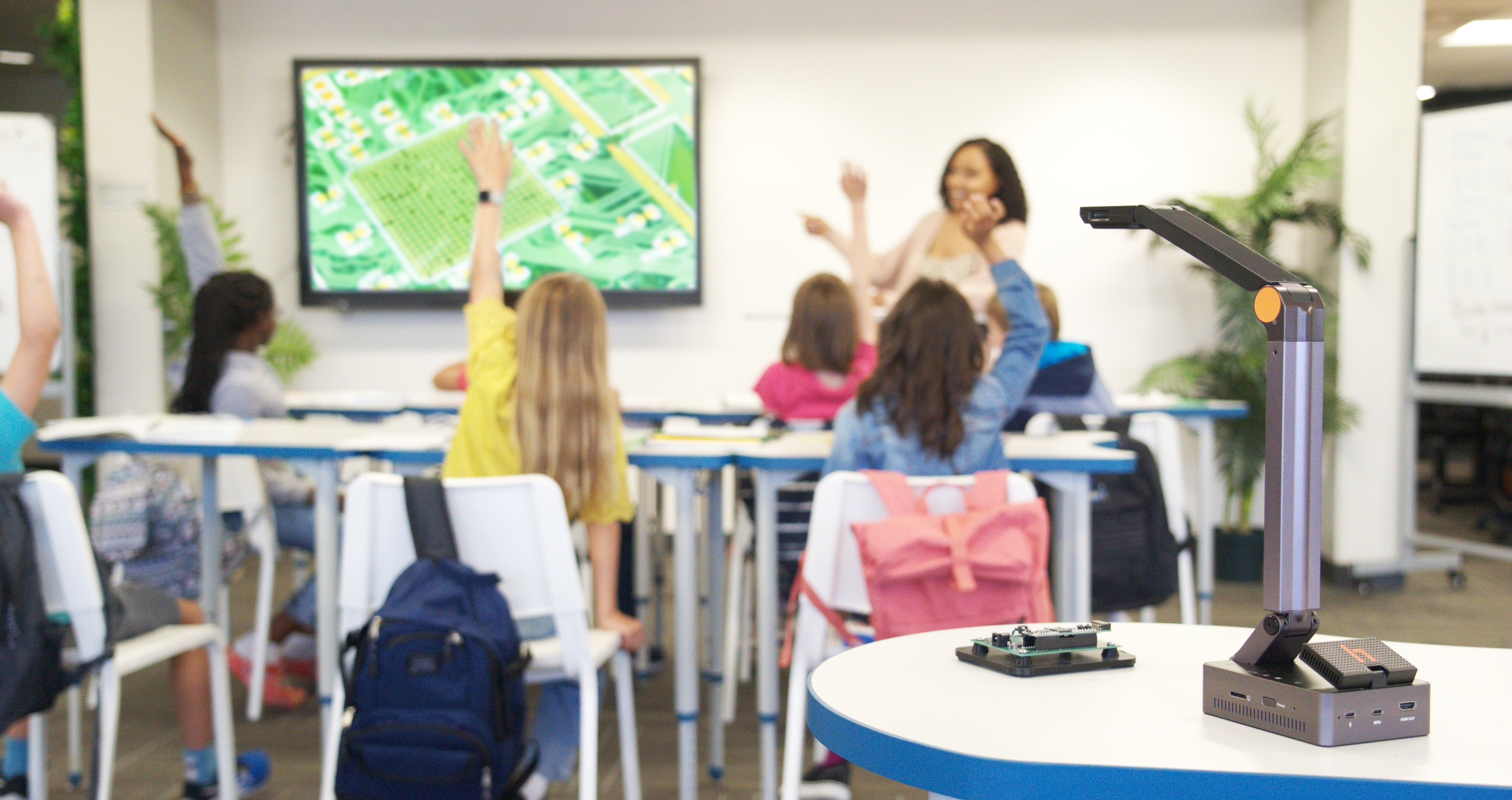The Future of Education is Wireless: Are You Ready?
The Future of Education is Wireless: Are You Ready?
And How HoverCam is Leading The Charge
Modern classrooms are evolving rapidly. Teachers are moving freely, student engagement is shifting toward hands-on interaction, and the days of tangled cords and fixed AV carts are coming to a close. Wireless isn’t a buzzword anymore—it’s the foundation of next-gen teaching environments.
But while the benefits are clear, wireless transformation must be done with a strategic eye toward pedagogy, performance, and security.
Let’s explore why a wireless classroom powered by HoverCam doesn’t just check the right boxes—it redefines them.
1. Teacher Agility Is the New Pedagogy
Wireless technology enables teachers to break free from fixed stations and interact more fluidly with students. It supports a modern pedagogy rooted in movement, spontaneity, and differentiated learning.
Scenario:
A teacher using the Orbit Air wireless document camera walks between student tables, wirelessly casting a live view of student work on the classroom display.
HoverCam’s Pilot wireless podiums extend this freedom, offering an untethered, all-in-one teaching hub that empowers educators to control every part of the classroom experience from anywhere in the room.
2. Simultaneous Multi-Source Casting, Without a Matrix Switch
With Orbit Trio, teachers aren’t limited to one source at a time. They can cast their laptop and document camera content simultaneously to the same display, making it easy to compare, annotate, or layer digital and analog materials in side by side or picture-in-picture views.
Scenario:
While teaching a writing lesson, a teacher wirelessly shares their Google Slides lesson from their laptop on one side of their interactive flat panel’s screen, and a real-time demonstration from the document camera on the other side of the screen. There’s no input switching or unplugging/plugging HDMI cables—or calling the IT desk—it just works.
3. Empowering Student Voice with Live Sharing
HoverCam’s wireless doc cams turn students into co-presenters with minimal effort.
Scenario:
During group work, a teacher walks over to a student’s desk, holds the Orbit Air above their project, and instantly displays it on the classroom screen. Students can explain their process and receive real-time feedback from peers. No transition time. No moving to the front. Just immediate visibility and validation.
This kind of mobile flexibility fuels engagement, especially for quieter students or those who benefit from visual learning.
4. Cut the Clutter: No Cables, No Carts, No Chaos
Ask any IT director: wired AV systems are a maintenance headache. AV carts break. Cables get unplugged. Ports fail. Teachers lose time.
HoverCam’s wireless ecosystem eliminates the physical mess:
No more rolling carts between rooms.
No tripping hazards from loose cords.
No costly downtime from damaged hardware.
Scenario:
In a science classroom with flexible seating, a teacher uses the Orbit Pro with zero wires, zero setup time, and full mobility. At the end of class, there’s nothing to pack up. Everything is streamlined, and IT breathes easier.
5. Serious About Security: Orbit Is Built to Withstand Attacks
The move to wireless can introduce risk—if you choose the wrong tools. Many “wireless” doc cams on the market today pose serious threats to your school’s network integrity:
They often require global passwords, creating a single point of failure. Some vendors even list their global passwords on their websites—yikes.
Some connect directly to your district Wi-Fi, opening the door to wider network compromises.
They rely on vendor-installed software and drivers, which can be exploited as Trojan horses or backdoors.
Remember the 2016 Mirai botnet attack?
Thousands of insecure IoT cameras were hijacked to launch massive DDoS attacks. Without proper safeguards, your school’s doc cams could become the next botnet—or worse, a surveillance tool.
Orbit is different.
🔒 Not on your network: Orbit doesn’t connect via Wi-Fi at all. It uses a patented, isolated closed-loop wireless link between a transmitter and receiver dongle.
🔐 No global or default passwords: Each Orbit pair is uniquely encrypted, end-to-end.
🖥️ No driver installations: Orbit uses generic system drivers already built into your OS. No third-party apps, no new vulnerabilities, and no access to your computer’s network card.
🧿 Orbit Pro goes even further: Its mmWave transmission is confined to a single room, meaning an attacker would have to be physically present in the room to even attempt a breach—but good luck finding mmWave equipment.
Bottom line:
Orbit’s security architecture wasn’t retrofitted—it was built from the ground up to prevent the exact vulnerabilities plaguing other devices in the K–12 space.
Conclusion: Don’t Wait to Cut the Cord
Mobility. Engagement. Simplicity. Security.
The wireless classroom isn’t theoretical. It’s real, reliable, and already transforming teaching for thousands of educators. But the quality—and safety—of that wireless experience depends entirely on the tools you choose.
HoverCam’s Orbit and Pilot lines offer a pathway to modern teaching without compromising your district’s digital integrity. No more carts. No more cables. No more compromises.
Explore More
→ See All HoverCam Wireless Solutions
→ Make Any Doc Cam Wireless with Recast
→ See Why Orbit Is the Most Secure Wireless Doc Cam on the Market

